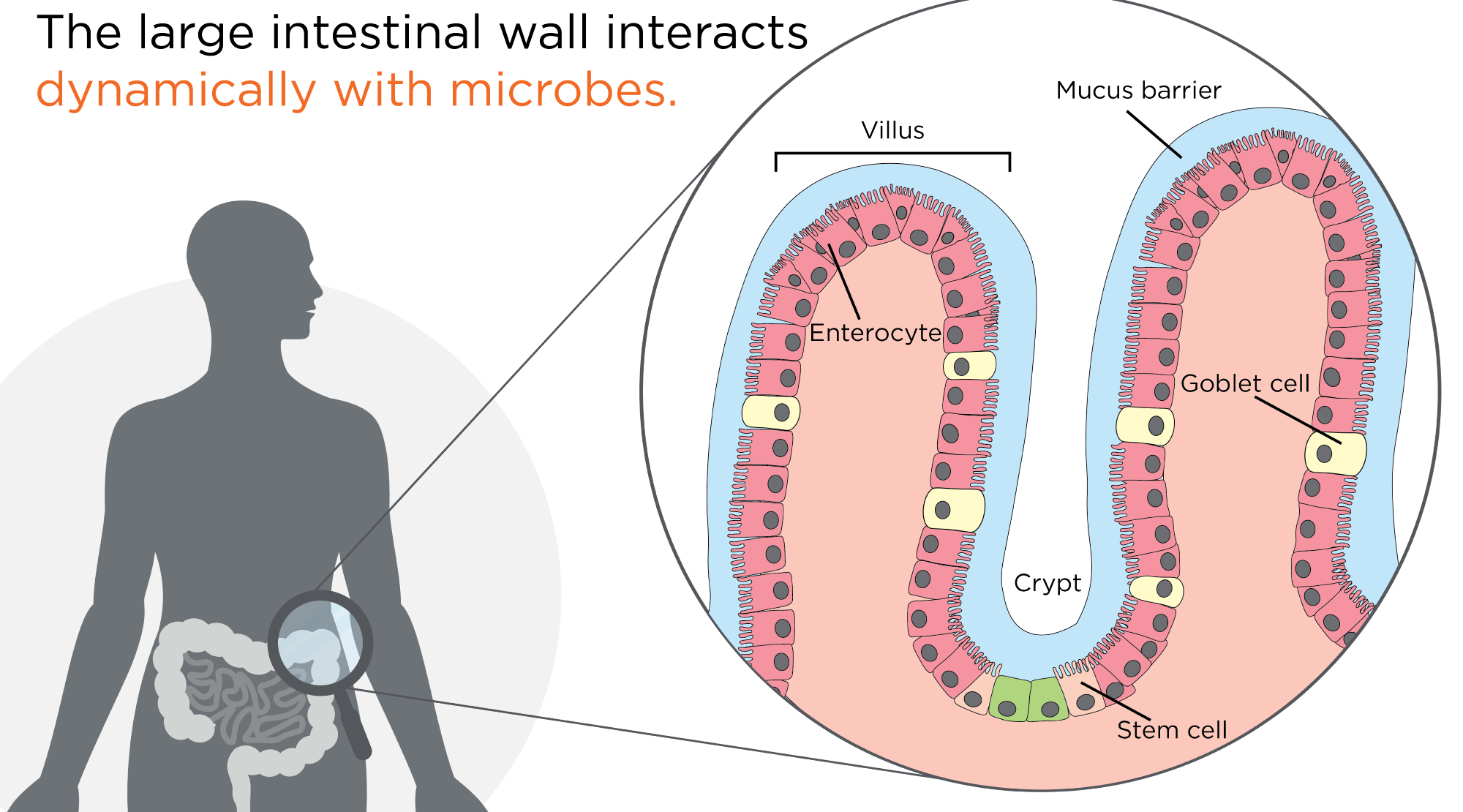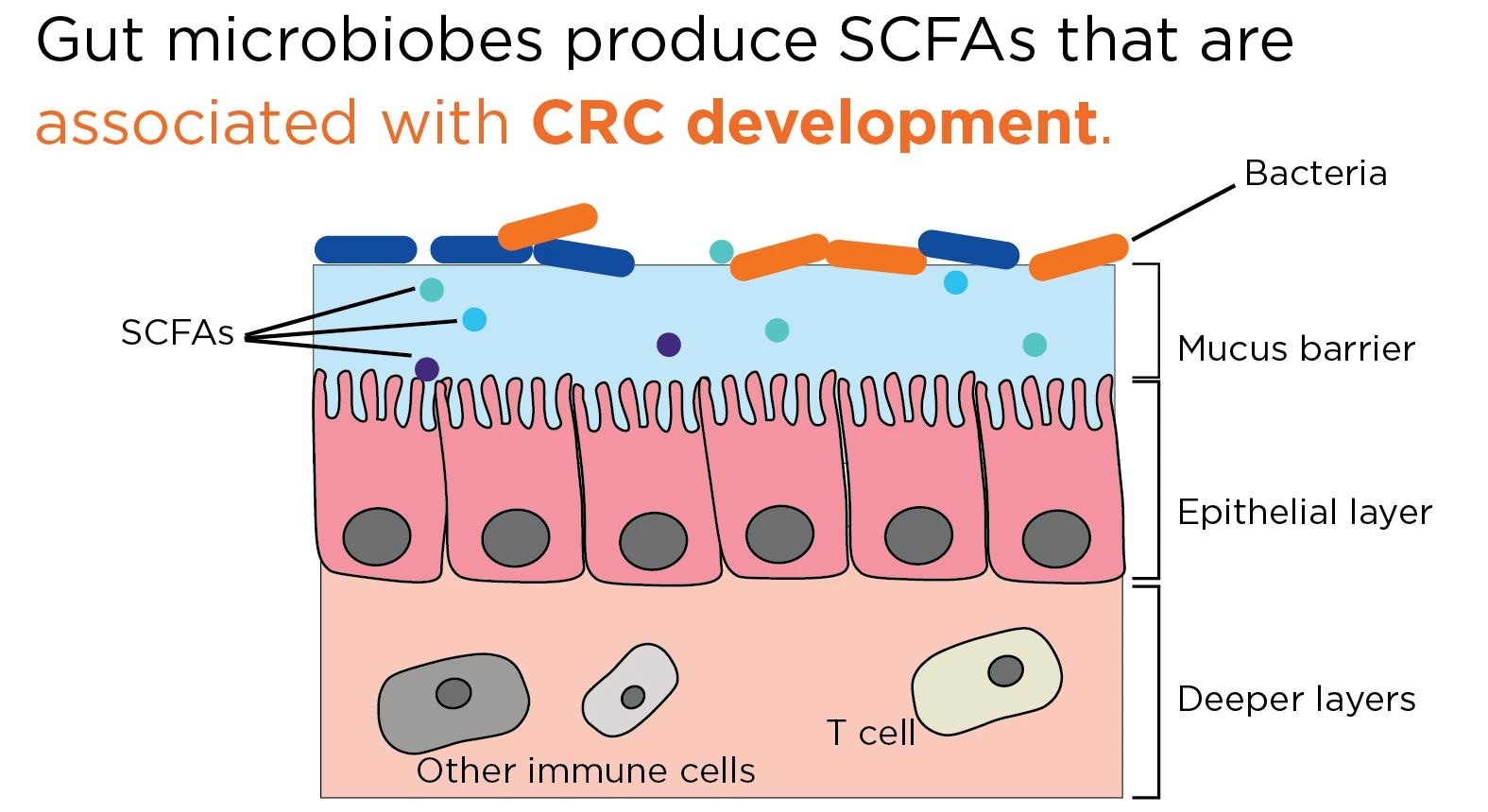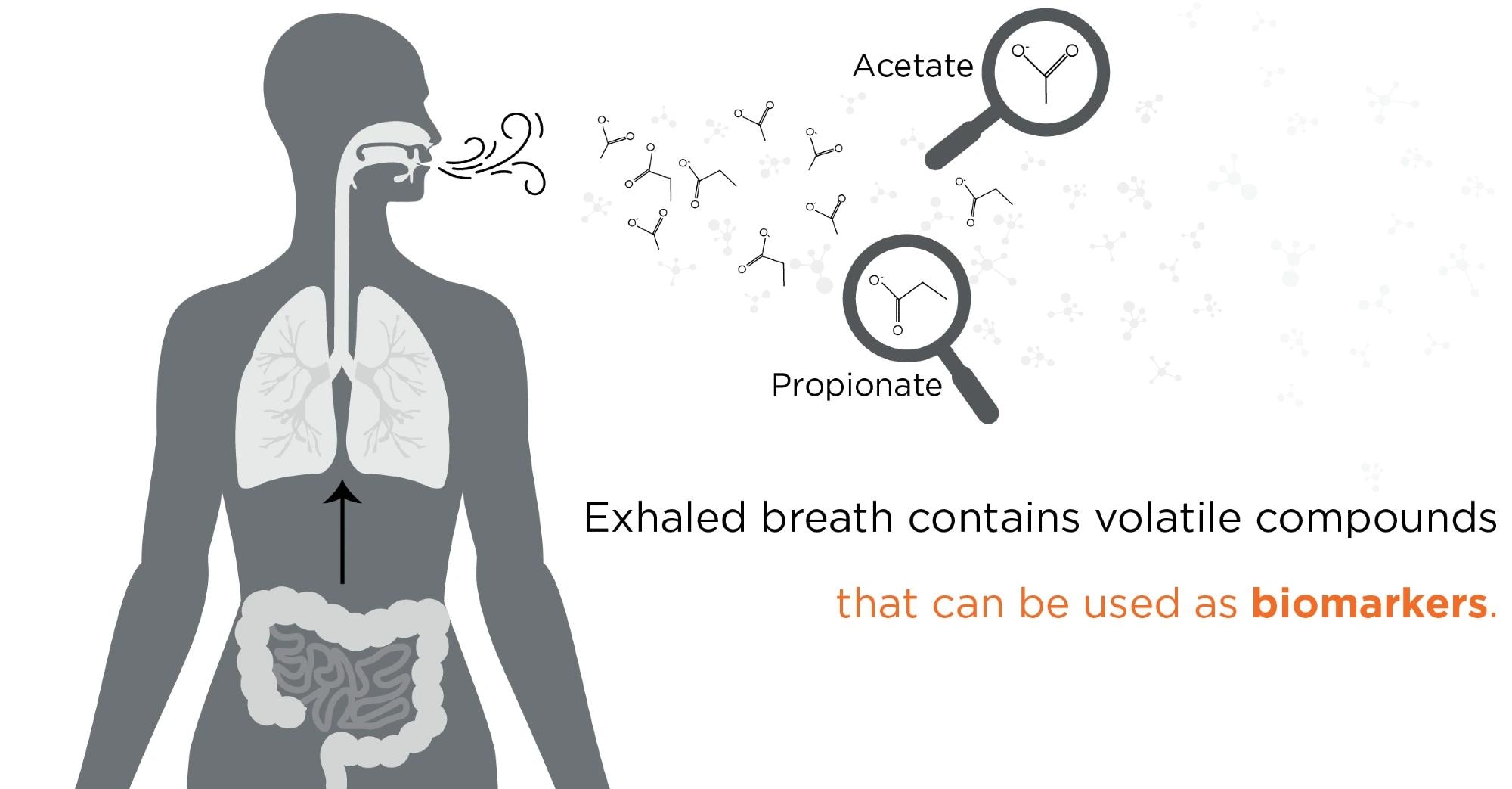Cancer is a major concern when it comes to global health issues. The World Health Organization claims that all cancers were responsible for an estimated 10 million deaths in 2020, making it a leading cause of death worldwide.1
The knowledge that the human body is home to various microbial species like bacteria, fungi, and archaea has changed the way processes behind health and disease are conceptualized.
This community of microbes – collectively known as the microbiota, or the microbiome – is associated with the pathophysiology of several diseases, including cancer, and therefore paves the way toward discovering new categories of potential biomarkers.
The gut microbiota has an established role in regulating the immune system, and how the microbial community is composed may affect the efficacy of a class of anti-cancer therapy that leverages the immune system, known as immune checkpoint inhibitors.3
This underscores one key mechanism through which the microbiome can interact with the body and affect cancer development and treatment. Several microbial compounds that can be leveraged as biomarkers are also volatile and, therefore, could be measured in exhaled breath. Therefore, breath analysis could offer a sturdy platform for investigating the clinically relevant links between the microbiome and cancer.
Colorectal cancer (CRC) is listed as the third leading cause of cancer death, with a growing rate of incidence rate.2 Using CRC as a model system, this article describes some of the fundamental principles of interactions between the microbiome and the body and how this may contribute to cancer. Furthermore, this piece explores how breath could be a groundbreaking, new platform for biomarker research in this area.
The large intestine is the stage for many host-microbe interactions
The wall of the large intestine is comprised of distinct layers of tissues, each with its specific cell types. Enterocytes are the most abundant cell type in the outer (epithelial) layer, with the lead role of nutrient absorption.
Typically, gut microbes do not come into direct contact with the cells of the intestinal epithelial layer as they are separated by a thin layer of mucus secreted by goblet cells, another type of cell in the epithelial layer.4
This mucus barrier is crucial; it maintains the flow and balance of nutrients in the enterocytes and toward the symbiotic microbiota. This protects the intestine against mechanical stress, keeping the epithelial cells attached to the gut microbiota to shield it from potentially harmful secreted compounds.

Image Credit: Owlstone Medical Ltd
If the integrity of the mucus barrier is compromised, then there may be direct contact between microbes and the intestinal cells, as well as interactions between various secreted metabolites to potentially reach the surface cells, and in turn penetrate deep into the intestinal tissue.
If the intestinal epithelial barrier is disrupted, compounds created via the microbial metabolic or infectious pathways can impede cellular mechanisms, including the regulation of cellular proliferation, inflammation, and additional disturbances of the epithelial barrier. Collectively, this can create an environment ripe for tumor development.5,6
When subject to such conditions, the normal cells of the intestinal tract may advance to a cancerous state, and there is a significant body of clinical evidence that the gut microbiome has a close relation with the development of CRC.5
Disrupting the microbial community and sending it into a state of dysbiosis can have both direct and indirect impacts on cancer development, and the microbially derived short-chain fatty acids (SCFAs) can be used to track how the microbiome can play a role in the development of CRC.
SCFAs and cancer

Image Credit: Owlstone Medical Ltd
The bacteria in the gut are involved in the production of several SCFAs, such as acetate, butyrate, and propionate, all three of which have been affiliated with the suppression of inflammation in the gut, as well as CRC development.7
One of the most abundant symbiotic bacterial phyla inhabiting the intestinal tract is Firmicutes, and alongside Bacteroides, comprises 95% of the microbial colonizers of the gut.9,10
These bacterial phyla are the leading creators of acetate and propionate, and the reduced levels of Firmicutes bacteria in the gut-associated with aging is related to a shift in the microbiota toward a more inflammatory state and tumorigenic environment.5
Acetate constitutes most of the SCFAs produced in the colon, and butyrate acts as a main energy source for enterocytes and reduced levels of butyrate. Butyrate-producing bacteria have been persistently linked to CRC incidence.6 Both butyrate and propionate are affiliated with regulating T cell function, which helps regulate levels of inflammation throughout the large intestine.
There are several mechanisms through which butyrate, in particular, can contribute an anti-cancer effect, including inducing apoptosis in CRC cells and epigenetic modulation through inhibiting histone deacetylases. Furthermore, butyrate can serve as an anti-inflammatory signal, reduce transit time, and contribute to maintaining the intestinal epithelial barrier.6,8
All in all, this indicates a fundamental mechanism through which SCFA levels produced by the gut are associated with CRC risk and development. Therefore, SCFAs and other microbially produced compounds could be key biomarkers for evaluating the predisposing factors an individual may be exposed to evaluate a risk of cancer development and monitoring cancer progression.
SCFAs are volatile, and many are detectable in exhaled breath
SCFAs can be grouped as volatile compounds, including acetate, butyrate, propionate, and several more, which are easily detectable in exhaled breath and can be found in Owlstone’s VOC Atlas.
Other SCFAs in the VOC Atlas include isobutyric acid, 2-methylbutanoic acid, and isovaleric acid. Volatile SCFAs originating in the gut can pass into the bloodstream, circulate throughout the body, and then enter the airways in the lungs via the network of blood vessels surrounding the alveolar membrane.
The air in the lungs, enriched with volatile compounds from all over the body, is then exhaled. Therefore, detecting endogenously produced compounds in the breath can offer key insights into the microbial metabolism processes occurring in the gastrointestinal tract.

Image Credit: Owlstone Medical Ltd
Based on how gut microbes produce hydrogen gas, the time between when a volatile compound is produced in the gut to being able to measurably detect it in the breath has been measured to be around five minutes.11
As breath is virtually inexhaustible, collecting significant volumes at frequent intervals is possible, and any compounds acquired can be pre-concentrated prior to analysis.
These factors make it possible to conduct a longitudinal analysis of volatile metabolites in breath in real time, and SCFAs show themselves as key biomarkers for CRC in clinical studies. There are several more volatile compounds, including those that are produced microbially to be found in Owlstone’s VOC Atlas, several of which have been associated with cancer.
Owlstone is considered a world leader in Breath Biopsy for early detection and precision medicine and is on hand to assist with implementing breath analysis in research applications.
Breath Biopsy OMNI offers the necessary requirements to start using breath analysis and expert advice from Owlstone’s team of scientists.
This solution makes it possible to cross-reference data against Owlstone’s VOC Atlas to better understand the behavior of individual VOCs in a healthy population and validate cancer or microbiome biomarkers confidently.
Owlstone’s in vitro headspace sampling helps identify VOCs produced by laboratory samples such as urine, fecal matter, and blood, and distinguish whether biomarkers of concern could be analyzed using breath analysis.
References and further reading
- Cancer [Internet]. [cited 2023 Apr 19]. Available from: https://www.who.int/news-room/fact-sheets/detail/cancer
- Rawla P, Sunkara T, Barsouk A. Epidemiology of colorectal cancer: incidence, mortality, survival, and risk factors. Prz Gastroenterol. 2019;14(2):89–103. DOI: 10.5114/pg.2018.81072
- Li X, Zhang S, Guo G, Han J, Yu J. Gut microbiome in modulating immune checkpoint inhibitors. EBioMedicine. 2022;82:104163. DOI: 10.1016/j.ebiom.2022.104163
- Coleman OI, Haller D. Microbe–Mucus Interface in the Pathogenesis of Colorectal Cancer. Cancers (Basel). 2021 Feb 4;13(4):616. DOI: 10.3390/cancers13040616
- Raskov H, Burcharth J, Pommergaard HC. Linking Gut Microbiota to Colorectal Cancer. J Cancer. 2017 Sep 20;8(17):3378–95. DOI: 10.7150/jca.20497
- Mirzaei R, Afaghi A, Babakhani S, Sohrabi MR, Hosseini-Fard SR, Babolhavaeji K, et al. Role of microbiota-derived short-chain fatty acids in cancer development and prevention. Biomedicine & Pharmacotherapy. 2021 Jul 1;139:111619. DOI: 10.1016/j.biopha.2021.111619
- Louis P, Hold GL, Flint HJ. The gut microbiota, bacterial metabolites and colorectal cancer. Nat Rev Microbiol. 2014 Oct;12(10):661–72. DOI: 10.1038/nrmicro3344
- Han A, Bennett N, Ahmed B, Whelan J, Donohoe DR. Butyrate decreases its own oxidation in colorectal cancer cells through inhibition of histone deacetylases. Oncotarget. 2018 Jun 5;9(43):27280–92. DOI: 10.18632/oncotarget.25546
- Structure, Function and Diversity of the Healthy Human Microbiome. Nature. 2012 Jun 13;486(7402):207–14. DOI: 10.1038/nature11234
- Allaband C, McDonald D, Vázquez-Baeza Y, Minich JJ, Tripathi A, Brenner DA, et al. Microbiome 101: Studying, Analyzing, and Interpreting Gut Microbiome Data for Clinicians. Clin Gastroenterol Hepatol. 2019 Jan;17(2):218–30. DOI: 10.1016/j.cgh.2018.09.017
- Yu D, Cheeseman F, Vanner S. Combined oro-caecal scintigraphy and lactulose hydrogen breath testing demonstrate that breath testing detects oro-caecal transit, not small intestinal bacterial overgrowth in patients with IBS. Gut. 2011 Mar;60(3):334–40. DOI: 10.1136/gut.2009.205476
About Owlstone Medical Ltd
Owlstone Medical is developing a breathalyzer with a focus on non-invasive diagnostics for cancer, inflammatory disease and infectious disease, the company aims to save 100,000 lives and $1.5B in healthcare costs.
The company’s Breath Biopsy® platform has introduced a new diagnostic modality making it possible to discover novel non-invasive biomarkers in breath using a platform with the potential to transition to point-of-care. The award winning ReCIVA Breath Sampler ensures reliable collection of breath samples.
Breath Biopsy is supporting research into early detection and precision medicine with applications in cancer and a wide range of other medical conditions. Highly sensitive and selective, these tests allow for early diagnosis when treatments are more effective and more lives can be saved.
Sponsored Content Policy: News-Medical.net publishes articles and related content that may be derived from sources where we have existing commercial relationships, provided such content adds value to the core editorial ethos of News-Medical.Net which is to educate and inform site visitors interested in medical research, science, medical devices and treatments.